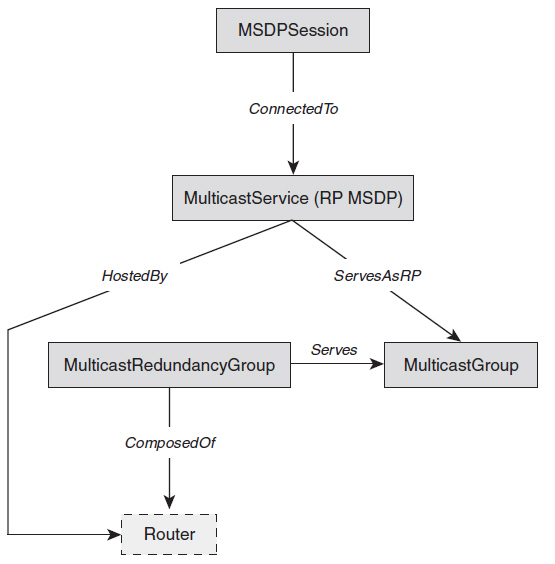MSDP serves two purposes in multicast networks:
- RPs in different autonomous systems use MSDP to establish peering relationships, and pass source information between each other
- A group of routers can share the same RP address, and this allows load-sharing where sources register with the “closest” RP device
The Multicast Manager discovers MSDP sessions and creates redundancy groups of RPs as needed. The relationships are shown in the following figure:

Where MSDP is used for peering between domains, an MSDPSession object will have a ConnectedTo relationship to two MulticastService objects, one in each domain. These MulticastService objects will have labels RP and MSDP in the Multicast map. Each RP MulticastService object will have a relationship ServesAsRP to one or more MulticastGroup objects.
When MSDP is used to support redundancy between RPs, there is an additional Serves relationship between RPMulticastService objects and a MulticastRedundancyGroup object, which in turn has a Serves relationship to each MulticastGroup object that is supported by the redundancy group.